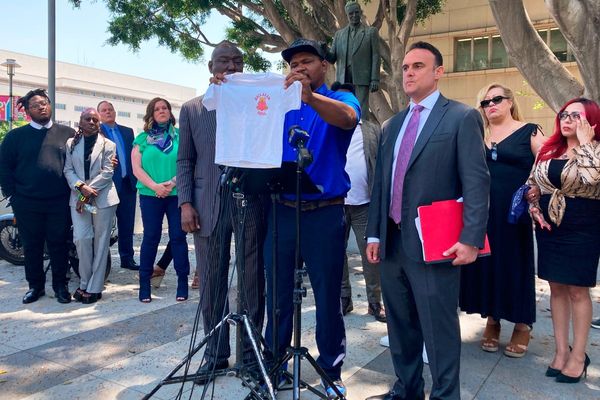
Why bother reinstating Donald Trump’s Twitter account? Twitter owner Elon Musk, having said that no such decisions would be made until a content moderation council was established, made the decision after running a quick Twitter poll. He also reactivated the accounts of Kanye West, who was dumped by advertisers after delusional antisemitic comments, and Andrew Tate, the misogynist “influencer” who was banned in 2017 for violating the terms of service.
This puts already nervous advertisers, who account for about 90% of the company’s revenue, in a precarious position. The NAACP has called for big firms to halt advertising on Twitter. Many of them have already done so. The Trump decision also risks a wider political backlash for the platform, especially among users. Musk is already under federal investigation for his conduct during the takeover.
Despite Musk being the world’s richest man, very little of what he has done since purchasing Twitter looks remotely like good business sense. Some of this is down to his management style playing out in a more public forum: he notoriously rules by fear, breaking the law, busting unions and firing employees who criticise him. He appears to want to establish the same pattern at Twitter, based on his apparently unassailable conviction that he knows best. But his interest in Twitter is not just commercial. He is clear that he thinks Twitter’s old management had a left bias, and that he would like to restore a friendly climate for rightist agitators. The goal appears to be to redesign Twitter, and to change its perceived politics.
So, Musk bought a platform of whose workings he knew little and began to “move fast and break things”, as the Silicon Valley motto has it. The purchase itself, adding $13bn to the company’s debt, was the first financial wound inflicted on the company. The second was the axe taken to staffing, making advertisers nervous and drawing the ire of the Federal Trade Commission. He has sacked enormous numbers of staff, beginning with a purge of about half of employees, before begging some of them to return. Meanwhile, a senior Twitter executive made it clear how little those who did return were valued, and how soon they would get the boot again. In leaked Slack messages, he called them “weak, lazy and unmotivated”, and he said they could easily be sacked again.
Musk has driven out a further estimated 1,200 staff members, including engineers responsible for managing content and ironing out bugs, after imposing a de facto loyalty oath. He has demanded engineers bring him examples of their own coding work to determine their value to the company – odd, given that the code is written collectively – and he has drafted 50 Tesla employees with no obvious experience with social media software or design to look at Twitter’s code. Recently, having got into a Twitter dispute with an engineer who knew more about the platform’s performance issues than he did, he fired him by tweet.
His online behaviour makes the company look terrible. Twitter’s factchecking service humiliatingly corrected him after he falsely tweeted that Twitter “drives a massive number of clicks” to other websites, being the “biggest click driver on the internet by far”.
However, nothing about Musk’s conduct suggests that the Twitter chaos is primarily about business. In fact, according to the Wall Street Journal (WSJ), Musk’s takeover was encouraged not just by the deposed executive Jack Dorsey but also by a network of rightwing libertarian billionaires close to Musk, including PayPal founder Peter Thiel. They argued that Twitter would be better run as a privately owned business.
One reason for the libertarians’ interest in Musk, says the WSJ, may have been his political evolution. Although he was once a centrist who backed Andrew Yang, he vehemently rejected the banning of Trump, believed that Twitter’s content moderation policies were being driven by politics, and claimed that Twitter was “far-left-biased”. (This is quite untrue: Twitter’s own internal research found that it amplified rightwing content.) He has become a purveyor of disinformation, for example on Covid-19, and the attack on Paul Pelosi (husband of House speaker Nancy Pelosi). As Twitter CEO, he used the platform to encourage voters to support the Republicans in the US midterm elections and, when they lost, spread a conspiracy theory that Sam Bankman-Fried laundered money for the Democrats. He is, though hardly a Trumper, cheerfully adjacent to the culture war politics of the American far right.
This would suggest that the billionaire takeover was, in part, a political move aimed at “disrupting” communications networks that the American right has repeatedly claimed are biased against it. Twitter, as a political entity, punches well above its business weight. In its early days, it thrived on its association with the Obama White House, and its presumed role in “Twitter revolutions” (a phrase minted by the state department). It was seen as a means of projecting US influence abroad. It didn’t cause those revolutions any more than it did the Trump presidency, or Black Lives Matter, but it was central to those political battles because of the way activists, politicians and reporters used the platform. Despite having many fewer users than Facebook or TikTok, it was and remains a powerful tool for shaping public discourse. Whoever controls it, whether or not they know what they’re doing, wields real political power.
Despite what Musk thinks, Twitter’s old board didn’t wield this power for the left, or even for liberals. Their content moderation policies evolved over time to placate advertisers and governments. They did not want to get rid of the various fascist microcelebrities and far-right disinfotainers, let alone the lucrative big beasts of the far right such as Trump and Alex Jones: they were forced to. Now, under Musk’s one-man rule, Twitter is being realigned. This is partly for Musk’s own recreation. He likes to “trigger the libs” and laps up the purveyors of incitement, disinformation and far-right propaganda on his platform. But it’s also to rebalance online information ecologies further in favour of the right.
The reinstatement of Trump’s account will not bring back the days when the former president was worth $2bn to Twitter in a single year. But it is indicative of where Musk wants to take the platform.
Richard Seymour is a political activist and author; his latest book is The Twittering Machine







